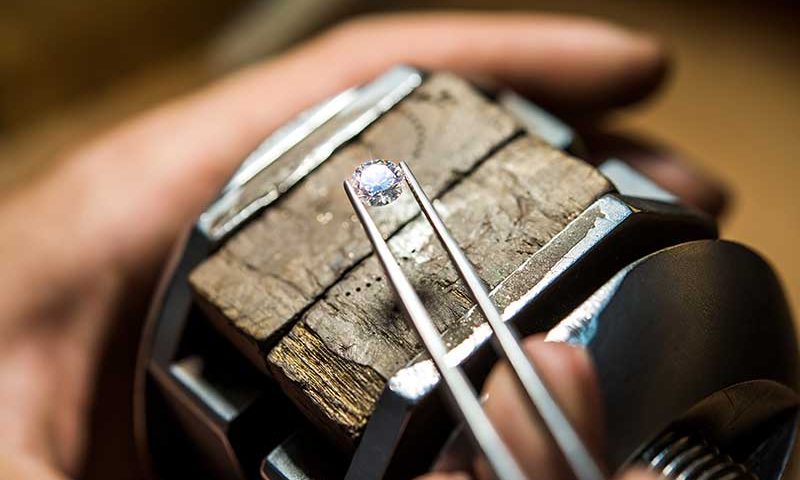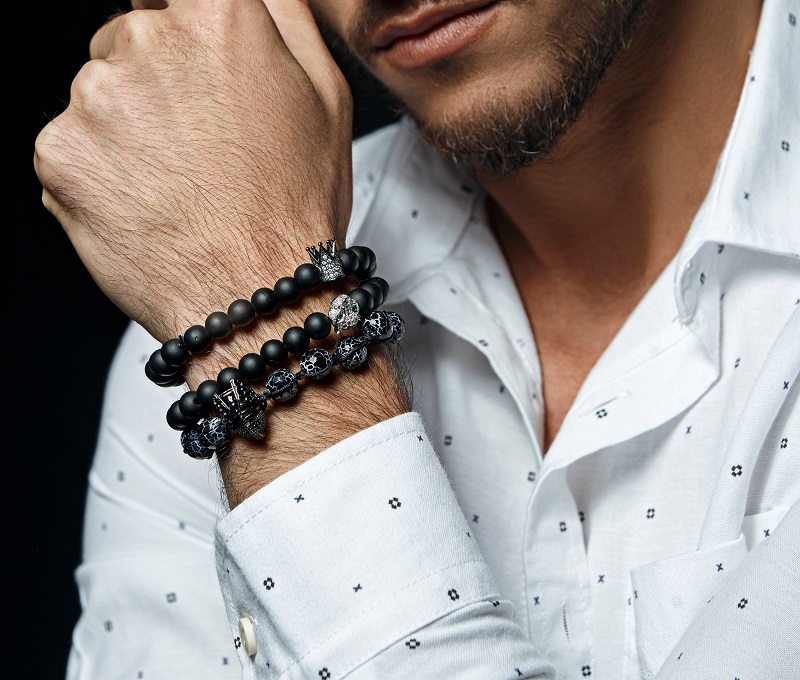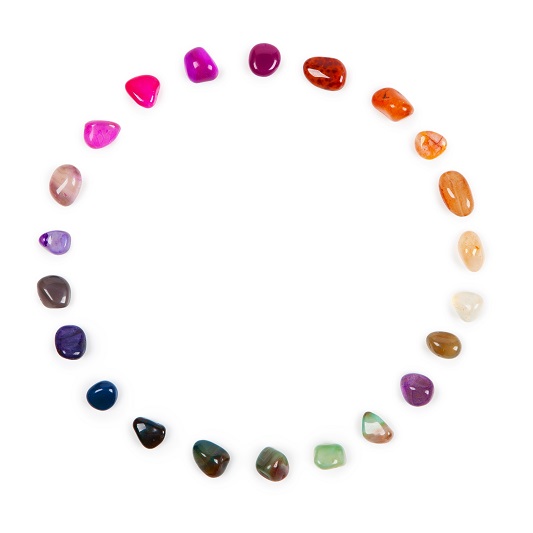Stone of the Week: Diamond

Papal Jewellery Attributes
18th August 2017
What are Cubic Zirconia stones and why are they becoming so popular?
24th August 2017
Diamonds are, without a doubt, the world’s most popular gemstone famed for their use in sophisticated and sparkling high-end designer jewellery. Formed at high temperatures and pressures that occur deep in the Earth’s mantle, they are not native to Earth’s surface, making the purest forms of them expensive crystals that are highly thought after. More than just being seen as aesthetically beautiful, diamonds are a symbol of love, romance, and commitment. Deriving from the Greek word adamas which translates as “unconquerable”, the stones name is one of the many reasons diamond is seen to be a stone of eternal love.
How to Identify Diamond
If you are unfamiliar with a diamonds’ structure, it is often possible to be misled into thinking a stone is a genuine diamond when in actual fact it is something entirely different. Common stones that are mistaken for diamonds are cubic zirconia and moissanite, which have nowhere near the same market value as a genuine diamond gemstone. There are a couple of easy ways that you can determine whether a stone is a diamond or not which can be read below.
The Water Test
The water test works due to a diamonds high density, meaning that if the stone you are testing matches the level of a genuine diamond, it should sink. Using a regular sized drinking glass, fill 3/4 of the way full with water. Next, drop the loose stone into the glass. If the stone sink, it’s a real diamond. Floating underneath or on the surface of the water indicates that what you are holding is more likely to be something different.
The Fog Test
This test is one that can be carried out even if the stone is already in a piece of jewellery, rather than a loose gemstone, making this one of the most popular methods for everyday people. To begin, hold the diamond or jewellery between two fingers and breath gently it’s surface. Due to the moisture and heat in your breath, a light fog will form. If the fog disappears straight away, then the diamond is real. If it takes longer for the fog to go, then it’s more likely that the diamond is a fake. Due to the way diamonds conduct heat, if the stone is real the fog should disperse quickly. If shopping for gemstone jewellery, you can do the fog test easily.
Different Colours and Types of Diamond
Most gemstone-quality diamonds range somewhere in the colour zone of colourless/clear to yellow, with the highest regarded and pricey diamonds usually being completely colourless. Though most diamonds have the appearance of being colourless, most end up having slightly tones of yellow or brown, even if these are difficult to be seen by the average human eye. Diamonds are graded alphabetically by the Gemological Institute of America on a scale from D (totally colourless) to Z (heavily tinted). Generally, tint cannot be seen to the naked eye until the diamond falls into category N or below on the scale, meaning that anything above this can still be incredibly beautiful depending on the clarity and cut.
Coloured diamonds, another category of diamond gemstones but one you’ll only find in a very high-end designer jewellery shop thanks to their rarity and cost, has recently increased in popularity among luxury jewellery lovers include a range of hues including those of red, yellow, blue, green, purple and pink. The value of these stones is determined based on the intensity and quality of the colour, meaning that more vibrant tones will cost more when bought. They are not as common as you may think, with an average of only one diamond in 10,000 being a true coloured or “fancy” diamond. This obviously makes them extremely sought after and valuable, with records of some being sold at auction for more than 1 million dollars per carat.
Where are Diamonds found?
The most common place for diamonds to be found is in areas where volcanic activity or erosion has taken place. If streams or rivers are nearby the original sites, diamonds can be washed away in the current resulting in them sometimes being found in unusual locations. Extreme heat and pressure deep within the Earth’s mantle cause carbon atoms to crystallise, resulting in the form of Diamonds. This generally occurs at least ninety miles under the outer layer, meaning that diamonds are not native to Earth’s surface. Kimberlite, a rock found in ancient volcano pipes is the most common host of diamonds. When a volcano erupts, kimberlite rock is expelled to the Earth’s surface, depositing diamonds in the process. Streams and rivers often end up washing away a large amount of kimberlite, leaving behind small amounts of diamond, often referred to as alluvial deposits.
Healing Properties of Diamond
Diamond, like all gemstones, is believed to have certain healing properties. It’s pure white light is thought by some to bring clarity to our lives, as well as helping us to form bonding relationships as our lives come together as one. Seen as a sign of commitment, Diamond brings trust into our relationships and encourages us to live in harmony with one another. A stone that never needs recharging, diamond can be used to enhance the power of other gemstones and crystals, due to it bringing strength and endurance to all energies. A common use for Diamond in today’s society is for blocking electromagnetic stress, as well as protecting against emanations believed to be given out by mobile phones.
With the idea of purifying and detoxifying the body, diamond is thought to rebalancing the metabolism and begin to treat allergies and chronic health conditions. Thought to effectively treat dizziness, diamond can have a healing effect on conditions such as vertigo as well as iron deficiency anaemia.
In Summary
Diamond is a high quality, sought after gemstone renowned for its use in jewellery, particularly engagement rings due to the stone being seen to hold healing properties such as trust to relationships and eternal love. Whether you’re looking to rebalancing your metabolism or treat chronic health conditions, diamond can be a powerful tool to aid you in the process. Remember, if you try diamond as a natural remedy for illness and symptoms persist, always arrange an appointment with your doctor or seek professional health advice.
If you’re looking to add diamonds to your jewellery box, to begin with, try a simple gemstone bracelet.




